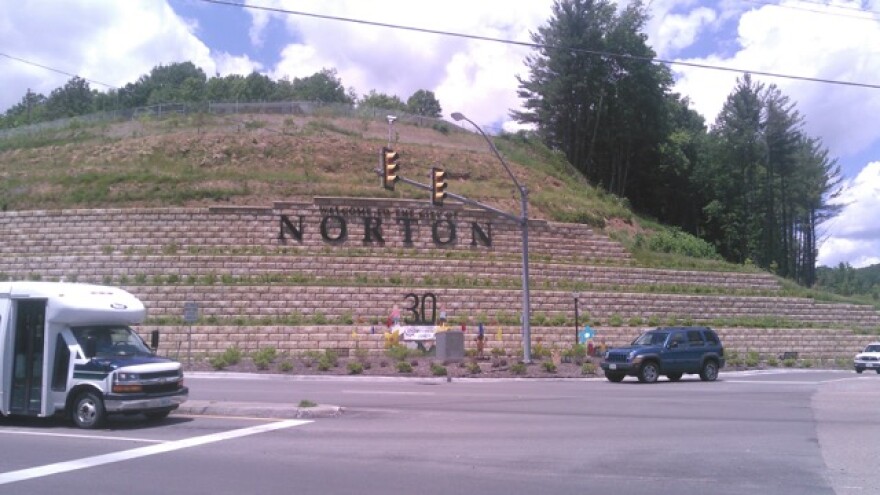The booms and busts of the coal economy have been a way of life in Appalachia for nearly a hundred years. Despite promises that it will rise again, many in central Appalachia see the writing on the wall.
In the first part of our series, Robbie Harris takes us to Norton, Virginia where abandoned mines dominate the landscape, begging the question…what’s next?
When you arrive in the city of Norton Virginia, right in the center of town you see a huge curved wall: neat blocks of engineered stone that appear to be holding up the side of a mountain.
On my tour of the Virginia city, Adam Wells, an economic development specialist with Appalachian Voices, says they call it the ‘Great Wall of Norton.’
Near the Tennessee border, Norton is full of tall mountains and deep hollows, places where coal is still being mined and where it once was.
“There used to be a highwall here and big rocks were becoming dislodged from the wall and rolling down into traffic,” Wells says.
“This is the way kids would walk to school and so it this was very dangerous.”

A highwall is what’s left standing after the entire side of one of these mountains is blasted away to reveal a coal seam. The great wall of Norton was shored up thanks to a combination of state and federal funds.
But driving around the outskirts you see highwalls that remain just as they were left: exposed layers of rock, sand and clay in hues of pinks and grays to orange and rust shifting in the changing light. At first glance you might mistake them for those breathtaking natural cliffs you see along rivers, but on closer inspection, they’re too perfect to be natural.
Wells explains, “Highwalls were created through bench and augur mining, which is pretty prevalent in the 60s and 70s where a road bench was cut into the mountain and taken out like a piece of pie. You can see right here, the wedge was never put back so there’s a pretty vertical, man made cliff.”
It wasn’t until 1977 that coal companies were required by law to clean up their mines when they close them. The Surface Mining Control and Reclamation Act of 1977, known as SMCRA, levies a fee on coal companies for each ton they mine today, to help clean up the orphan mines. But it’s a different story for mines abandoned before that.
Gerald Collins owns a coal mining services company in Wise County. He says, “so you’ve got a huge amount of pre SMCRA mining, abandoned mine land in Virginia right now. That total is a little over 50,000 acres.”
That’s because back then, there were no laws requiring mine owners to clean up after themselves. So Collins says they didn’t.

“You have to keep in mind, back then, their needs were different. They were just trying to survive. Even going into the early 60s you had what were called ‘truck mines.’ Those were very small, mom-and-pop operations that went to a site and mined coal as far as they could mine it at that particular site.”
But today, decades after SMCRA clean-up-rules were enacted, abandoned mine lands in Virginia remain just that.
There are still many abandoned mines, but not enough money in the clean-up fund.
But what about post-SMCRA mines, the ones since 1977 that their owners are required to clean up and reclaim?
Wells points to another highwall on our tour: “...and here’s ‘reclaimed’ mine land. You can see the valley fill and their efforts to re-create a stream.”
A stream that was destroyed by strip mining is now a listless trickle of water wending its way among rocks arranged in patterns not found in nature.
Wells continues, “Humans cannot create an Appalachian stream. It’s just not possible.”
Maybe not, but at the same time Wells is convinced that the only way to get beyond the practices of the past in coal country is to create a new economy, literally, atop the old.


